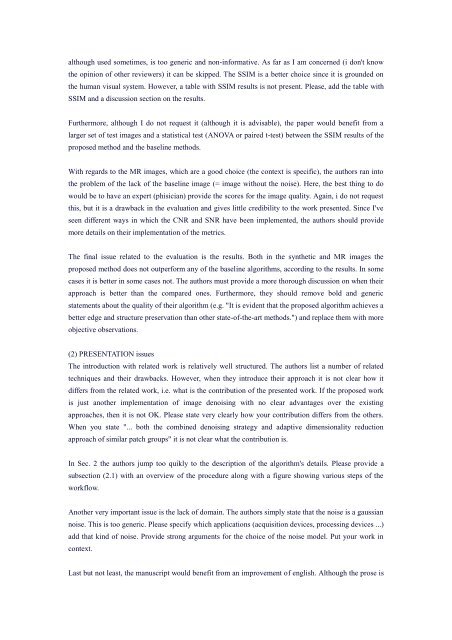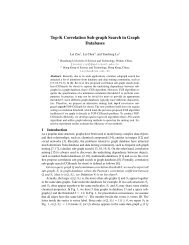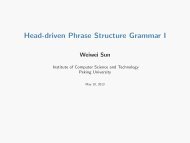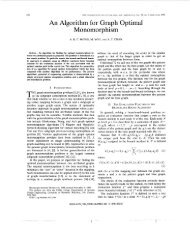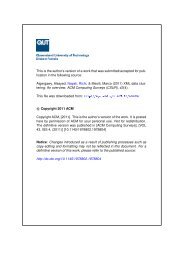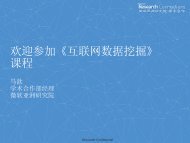Elsevier Editorial System(tm) for Information Sciences Manuscript ...
Elsevier Editorial System(tm) for Information Sciences Manuscript ...
Elsevier Editorial System(tm) for Information Sciences Manuscript ...
Create successful ePaper yourself
Turn your PDF publications into a flip-book with our unique Google optimized e-Paper software.
although used sometimes, is too generic and non-in<strong>for</strong>mative. As far as I am concerned (i don't know<br />
the opinion of other reviewers) it can be skipped. The SSIM is a better choice since it is grounded on<br />
the human visual system. However, a table with SSIM results is not present. Please, add the table with<br />
SSIM and a discussion section on the results.<br />
Furthermore, although I do not request it (although it is advisable), the paper would benefit from a<br />
larger set of test images and a statistical test (ANOVA or paired t-test) between the SSIM results of the<br />
proposed method and the baseline methods.<br />
With regards to the MR images, which are a good choice (the context is specific), the authors ran into<br />
the problem of the lack of the baseline image (= image without the noise). Here, the best thing to do<br />
would be to have an expert (phisician) provide the scores <strong>for</strong> the image quality. Again, i do not request<br />
this, but it is a drawback in the evaluation and gives little credibility to the work presented. Since I've<br />
seen different ways in which the CNR and SNR have been implemented, the authors should provide<br />
more details on their implementation of the metrics.<br />
The final issue related to the evaluation is the results. Both in the synthetic and MR images the<br />
proposed method does not outper<strong>for</strong>m any of the baseline algorithms, according to the results. In some<br />
cases it is better in some cases not. The authors must provide a more thorough discussion on when their<br />
approach is better than the compared ones. Furthermore, they should remove bold and generic<br />
statements about the quality of their algorithm (e.g. "It is evident that the proposed algorithm achieves a<br />
better edge and structure preservation than other state-of-the-art methods.") and replace them with more<br />
objective observations.<br />
(2) PRESENTATION issues<br />
The introduction with related work is relatively well structured. The authors list a number of related<br />
techniques and their drawbacks. However, when they introduce their approach it is not clear how it<br />
differs from the related work, i.e. what is the contribution of the presented work. If the proposed work<br />
is just another implementation of image denoising with no clear advantages over the existing<br />
approaches, then it is not OK. Please state very clearly how your contribution differs from the others.<br />
When you state "... both the combined denoising strategy and adaptive dimensionality reduction<br />
approach of similar patch groups" it is not clear what the contribution is.<br />
In Sec. 2 the authors jump too quikly to the description of the algorithm's details. Please provide a<br />
subsection (2.1) with an overview of the procedure along with a figure showing various steps of the<br />
workflow.<br />
Another very important issue is the lack of domain. The authors simply state that the noise is a gaussian<br />
noise. This is too generic. Please specify which applications (acquisition devices, processing devices ...)<br />
add that kind of noise. Provide strong arguments <strong>for</strong> the choice of the noise model. Put your work in<br />
context.<br />
Last but not least, the manuscript would benefit from an improvement of english. Although the prose is


